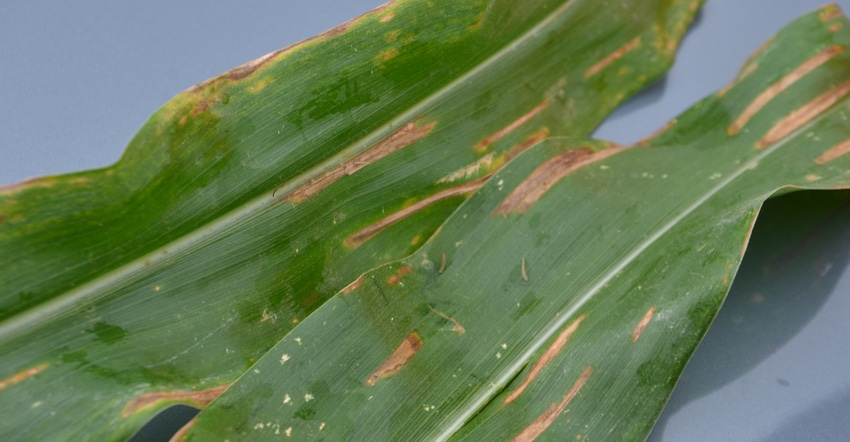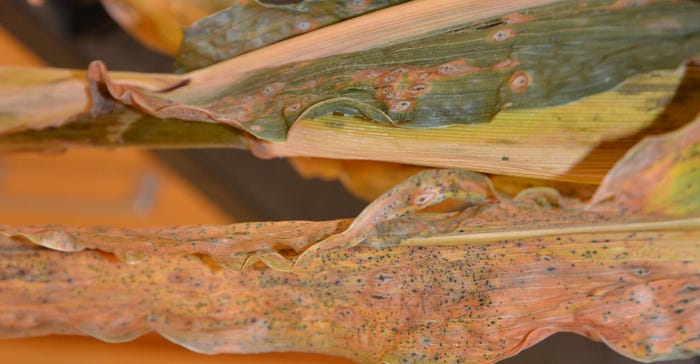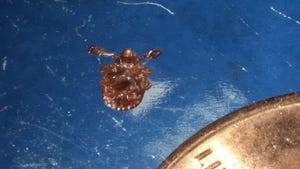
Tar spot received lots of headlines leading up to 2019, and rightfully so. The disease is relatively new to the Midwest and caused significant yield loss in some areas in 2018. Southern rust also created rumblings when it was discovered in southern parts of the eastern Corn Belt earlier this summer. Just two years ago, rust wreaked havoc especially in those same southern areas with a very late-season outbreak.
This year, however, Darcy Telenko, Purdue University field crop pathologist and Extension specialist, says she probably received more reports about gray leaf spot than any other foliar corn disease — until the second week of September. “We got more reports on tar spot beginning then,” she says. “But it seems to be making an appearance a bit later in crop maturity than last year. Hopefully, that means less impact on yield.”
Gray leaf spot often shares the title as the most common corn foliar disease with northern corn leaf blight.
“This season, gray leaf spot was more active statewide over northern corn leaf blight, especially in July and August,” Telenko says. Northern corn leaf blight flourishes in summers with cooler midsummer temperatures. “There were pockets where northern corn leaf blight was active.”
Field observations
Dave Nanda, director of genetics for Seed Genetics-Direct, observed gray leaf spot in a field in central Indiana. Initially he found it only on lower leaves and mostly as isolated lesions. The farmers applied a fungicide as a preventive measure. That coupled with shifting weather patterns means gray leaf spot likely won’t affect yield much in that field.
“The organism was definitely there,” Nanda says. “It’s the only foliar disease we identified in the field. Lesions were minimal and on lower leaves during most of the season. It’s a disease we can’t ever forget about. It deserves careful scouting and monitoring every year.”
Other diseases
Telenko wants to know where the other foliar diseases, including tar spot and southern rust, were located so she can learn more about both. Tar spot overwinters on infested debris in the soil, while southern rust spores must blow in from the tropics each year.

RELATIVELY NEW DISEASE: Tar spot didn’t appear to cause as much widespread infection in the eastern Corn Belt as it did a year ago, at least not until late in the season, Darcy Telenko notes. She studied this plant in her lab to learn more about tar spot.

By Aug. 19, southern rust was confirmed in these Indiana counties: Clay, Daviess, Dubois, Floyd, Gibson, Henry, Knox, Morgan, Porter, Posey, Putnam, Spencer, Sullivan, Vigo and Washington.
“It got all the way to northern Indiana,” Telenko says. “However, it was late, and conditions weren’t favorable enough to cause major issues.”
Meanwhile, tar spot was confirmed in Elkhart, Jasper, Kosciusko, LaPorte, Lagrange, Lake, Marshall, Noble, Porter, Pulaski and St. Joseph counties by Aug. 19.
“We’re doing what we can to learn more about this disease to help growers prepare for it in the future,” Telenko says.
About the Author(s)
You May Also Like




